Today, TV is no longer something surprising and unattainable. Such a miracle of technology is literally in every home. The modern market every day offers more and more new models, stuffed with "advanced" technologies.
To buy a really good TV and not overpay for those options that may never come in handy, you should understand new trends and trends in advance. Advice from sales consultants is not always helpful. After all, the main goal of such assistants is to sell quickly and more expensively. This is especially true for those models that have lingered on store shelves for a long time and do not meet the needs and expectations of the consumer.
Next, we will analyze which TV is better to choose in 2025 year according to experts, and what is really worth paying attention to when buying this expensive equipment.
What to look for when choosing
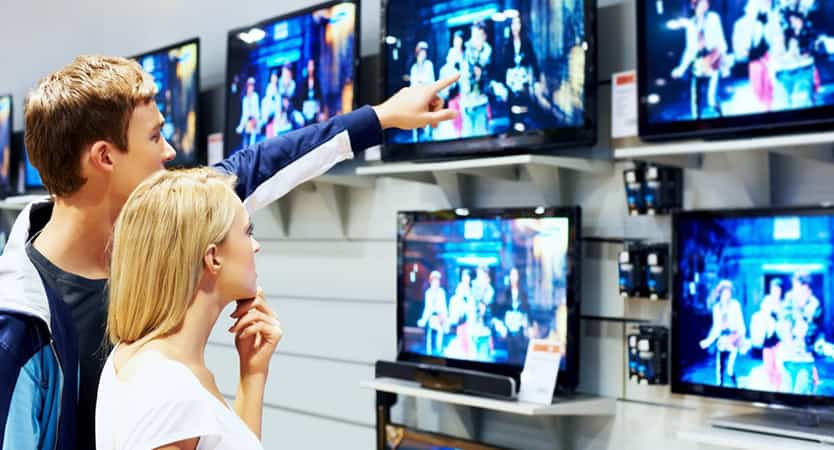
The correct selection of a modern TV depends on many parameters. And the question of price is not in the first place here. It is clear that a good TV cannot be cheap. However, do not forget that you will be using the equipment for more than one month, and maybe even a year. Therefore, the question of saving at the expense of quality is not worth it. At the same time, you need to think in advance which functions are important for you, and which you can safely sacrifice, while saving significantly. So let's get started.
- Screen type
- Backlight type
- Diagonal
- Screen resolution
- Format
- Response time and frequency
- Brightness and contrast
- Sound quality
- Interface
- Additional functions
- operating system
![]() See also - Rating of the best TVs 2025 of the year
See also - Rating of the best TVs 2025 of the year
Screen type
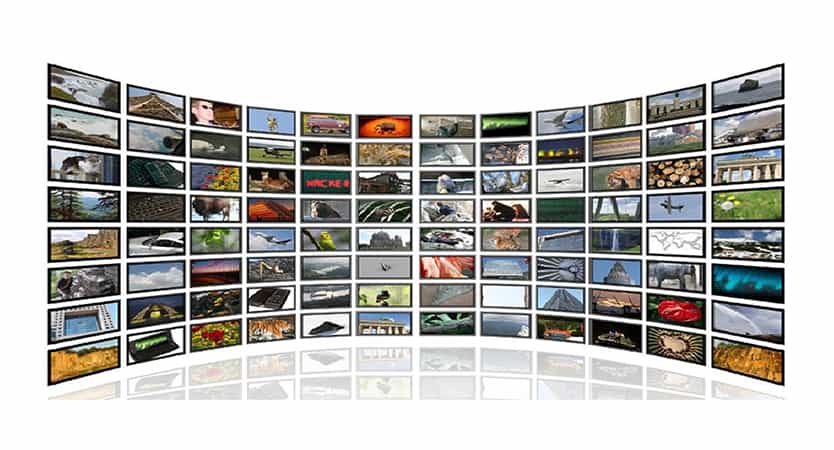
This is the first parameter to pay attention to. The following technologies are presented on the market:
- CRT... This is the most inexpensive and, one might say, “prehistoric” option. This type of TV was probably in every Soviet home, and many grandparents can still find it today. The main qualities of this type of TV are low price and long service life. At the same time, they are quite bulky and have minimal functionality. Among other things, it has been proven that prolonged TV viewing with such a screen negatively affects vision.
- LCD - liquid crystal (LCD)... At a relatively low cost, these models boast good picture quality, high color rendering and shallow depth. The main disadvantage of such screens is the fact that they tend to burn out. Therefore, they should be placed so that they are not exposed to direct sunlight. Otherwise, spots will appear on the screen over time.
- LED screens... These are much more "advanced" models. Unlike LCDs, LED matrix backlighting is used here.So they are even slightly thinner in size than their LCD counterparts. At the same time, LED-screens please with good picture quality and “eat” much less electricity.
- Plasma panels... Here the screen is not crystals with liquid, but sealed cells filled with gas. So in another way they can be called "gas-free". Thanks to this design, the technique, although it provides a better picture and does not fade, but consumes significantly more electricity. In addition, plasma models simply cannot be made small. The minimum screen size in this case will be 32 inches.
- Laser screens... One of the fairly new developments (less than 10 years). Such screens have a long service life and consume little electricity. In this case, the picture is of a fairly good quality. Perhaps their main drawback is their high cost.
- Projection. Such models are very controversial in terms of price-quality ratio. Demonstrating good color rendering and image quality, they, at the same time, are prone to the appearance of "broken" pixels. Parts of the screen will simply burn out over time, reducing image quality. In addition, projection models have a limited viewing angle, which also does not add to their popularity.
Another criterion for choosing a TV is the physical parameters of the screen. Modern models are flat and concave. The former are the most common, are very popular and are much cheaper. The latter have the ability to completely immerse the viewer inside the picture, create the effect of presence. Needless to say, concave models are significantly more expensive.
Backlight type
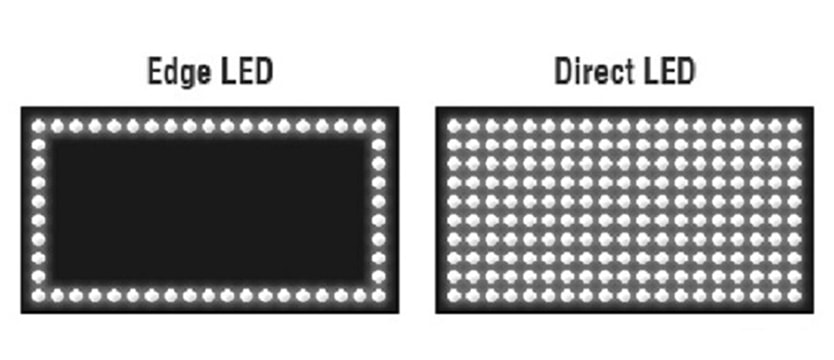
The type of backlight also affects the cost of the TV and the quality of the supplied image. Depending on the amount you are willing to spend on the purchase. You can choose one of these:
- Edge LED - modern models with a good viewing angle. The LEDs in it are located along the contour of the screen, thereby creating some kind of a luminous frame. This makes the device slim and quite economical.
- Direct LED - more "advanced" technology. Here the LEDs are scattered over the entire plane. The adjustment can be made for each individual diode. This makes it possible to easily adjust the local dimming of colors, which in turn allows you to make the picture brighter and more contrasting. TVs with Direct LED technology give a more colorful and "rich" picture.
- QLED - does not provide a backlight unit at all. The technology involves the use of quantum dots, which act as a backlight. Such TVs transmit the colors most acceptable to the human eye. The picture will be bright, but very natural, not "acidic". Such a TV is an order of magnitude more expensive than the others, however, this fact does not make it less popular.
- OLED - ultra-modern development. Instead of a backlight unit, they use diodes covered with a phosphor, which glows when an electrical pulse passes. Such models have the largest viewing angle. Even if you watch your favorite programs for hours, your eyes will never get tired. However, not everyone can afford such a TV. The cost of the models is really high.
Diagonal
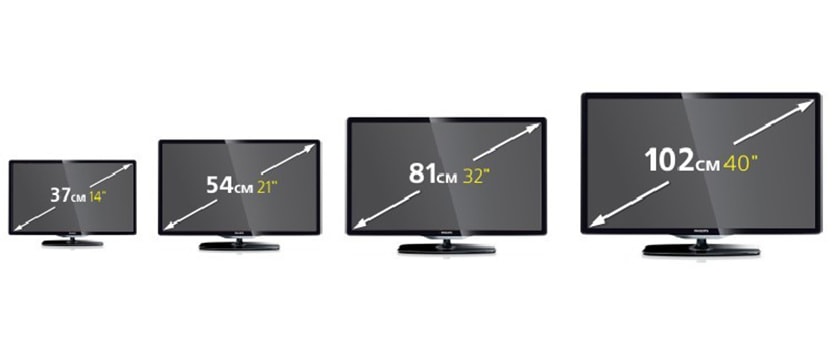
Another important parameter. On the market you can find models from 14 to 110 inches. When choosing a diagonal it is worth focusing not only on the popularity of the model, but also on the following criteria:
- Room dimensions. The greater the distance from the viewing position to the wall on which the equipment will be placed. For small rooms, such as a bedroom or kitchen, a small model is suitable; for a large hall, the equipment should be appropriate. To roughly estimate the size of the diagonal, measure the distance. The size of the TV should be about 1/4 of the distance to the viewing position (of course, you need to measure in the same units).
- Purpose.If you need a TV in the kitchen to watch morning and evening news, a 26-inch screen will suffice. For arranging a home theater, it is better to consider larger dimensions. If the size of the room allows, you can "start" from 55 inches. The 32 "to 55" range is user-rated great for a large bedroom or a medium sized living room.
![]() See also - How to find the optimal TV diagonal
See also - How to find the optimal TV diagonal
Screen resolution
This concept hides the size of the picture, measured in pixels. The larger this parameter, the better and sharper the image looks. Today there are 4 main types of this parameter:
- HD (1280x720, or 1366x768 pixels) - this resolution is inherent in small inexpensive models, it is quite enough for a “kitchen” version.
- Full HD (1920 x 1080) - the most common devices. The image quality is quite average, the pricing policy is affordable. The vast majority of devices are equipped with this technology.
- Ultra HD - 4K (4096x2160 or 3840x2160) - the technology is inherent in models with a diagonal of at least 32 inches in diagonal. Provides a very high quality image, however, it is quite expensive. See rating of the best 4K TVs.
- Ultra HD - 8K (7680x 4320) - ultra-modern technologies, unfortunately not yet available to most users. And the choice of models, due to the high cost, is not so diverse.
When choosing, you should focus not only on your wallet, but also on the purposes for which the TV is purchased. If you plan to watch analogue broadcasts, it makes no sense to purchase a device with FHD technology, let alone UHD. The maximum signal that can "run" through the cable will be significantly lower. High definitions are a must for anyone looking to watch high definition movies or connect to gaming platforms.
Format
This parameter comes directly from the previous one. Most modern TVs have a 16: 9 widescreen display. This indicator is the most popular, it is supported by the vast majority of TV programs, videos and films. This is also the most physiological indicator for a person, judging by the results of research conducted by scientists. There are other popular formats - 21: 9 and 16:10. They are used on TV screens with large diagonals.
Response time and frequency
This is another indicator worth paying attention to. The recall time is a parameter that characterizes the change in the position of the crystal in each pixel. It depends on how quickly the image will change during movement. If this indicator is insufficient, the so-called loop will be visible on the screen, which is not very comfortable.
The refresh rate is also an important metric. The higher the number, the better. Good mid-range TVs have a refresh rate of at least 400 Hz. The highest rate reaches 1,000 Hz.
Brightness and contrast
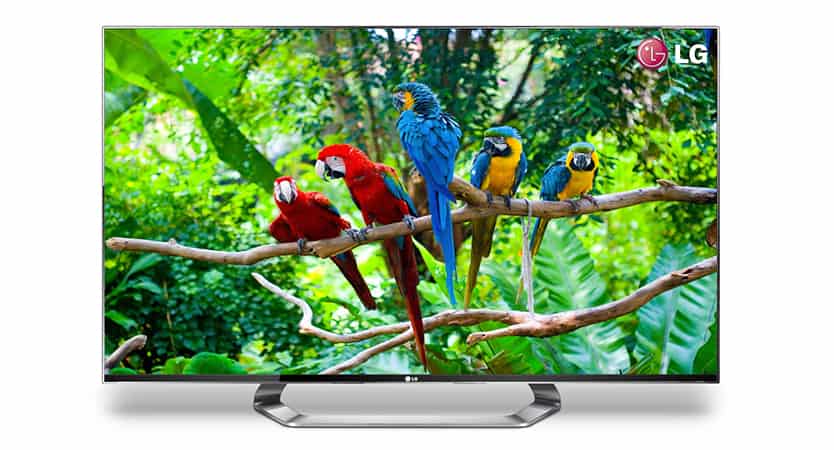
The picture of a good TV should be bright and juicy. In this case, the device should not work at the limit of its capabilities. To check, ask the consultant to take the remote control and show the appropriate scale in the settings. If there are middle positions, everything is in order. If the slider is pushed to the edge, they are trying to deceive you by artificially raising the image quality at a fairly low cost.
Sound quality
This parameter is also important when choosing a TV. The clearer the sound produced by the speakers, the more comfortable viewing will be. TVs with built-in Dolby Digital decoder and NICAM support have the best sound performance. In good TVs, the total power of the stereo speakers is at least 20 watts. It is best if the acoustics are multi-channel.
Interface
When choosing a new TV, be sure to inspect it on the sides and back.It is in these places that "sockets" are most often located for connecting various equipment: a game console, a tuner, a webcam, headphones, a flash drive, and so on. The more of these connectors on your TV, the better. The most popular are:
- USB port. Webcams, Wi-Fi, flash drives, headsets, keyboards and mice are connected here. So one such connector will not be enough.
- This includes the transmission of audio and video signals from a computer, video camera, gaming platforms and consoles, and so on.
- PAL - "jack" for analog broadcasting.
- DVB-C / DVB-S - for satellite TV and digital.
- This port is used to synchronize TV and VCR.
- Mini-jack or Jack5. Headphones are inserted here.
- S-Video. Analog port for transferring pictures from PC to TV.
When buying, pay attention that the available connectors match those available on the equipment you have already purchased. Otherwise, you will not be able to use them.
Additional functions
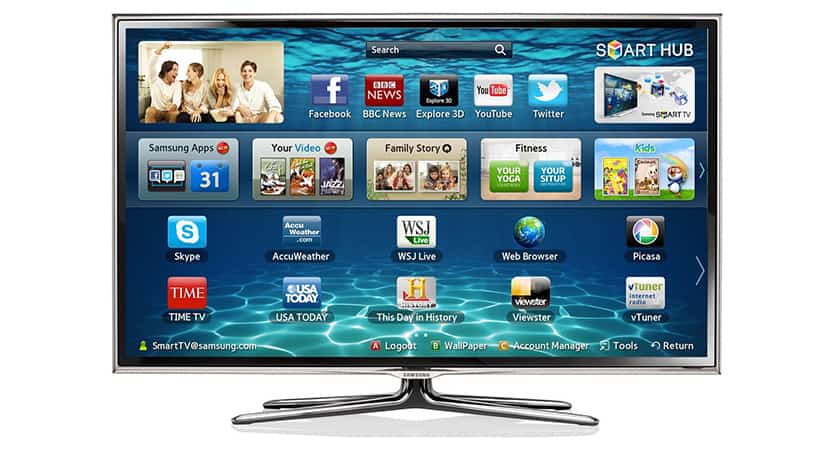
There are also a number of useful features that modern TVs have. Whether you need them or not, determine yourself. We will simply list all the possible "gadgets" of modern technology:
- 3D screen. It is enough to add special glasses to the TV and there will be no need to visit the cinema anymore. You can enjoy a three-dimensional image at home without leaving your favorite couch. It is worth remembering that when watching 3D films for a long time, your eyes can get tired and hurt.
- Wi-Fi support. So you will be "surfing" the Internet right through the TV. It is necessary that such a technology does not require additional wires, this is inconvenient.
- Anti-glare screen. Even in very intense light, the TV screen will not turn into a mirror. Watching such TV is much more comfortable.
- Picture-in-picture. This technology allows you to view multiple channels at once.
- Maintaining a memory card. The TV has a special connector that allows you to directly connect memory from a smartphone, camera or phone.
- 24p True Cinema. The function allows you to feed the image exactly with the frequency as it was shot - 24 frames / sec. With this kind of viewing, the eyes get tired much more slowly.
- The function allows you to pause the broadcast. This is not possible on simple TVs. The Time Shift system allows you not to miss a minute of an interesting movie or football match.
- Smart TV. Stream movies and other online content directly from the internet. You just need to connect the TV to the network.
- “List of favorite programs”. Allows you to add to favorites whatever you like. You don't have to constantly flip channels and keep track of time.
- With this technology, you can stream content directly from your smartphone. No wires are required for this.
- Voice and gesture control. You no longer need to make sure that the remote control is not lost. The technology is so specific that many people cannot get used to it.
- Progressive scan. The technology allows you to get a clearer and higher quality image due to the consistent transmission of frames.
This is not all that modern TVs can do. It is worth noting that, although most of the functions are quite convenient, they are not always worth spending extra money on. Users note that most of the "bells and whistles" get bored after several months of use and become simply expensive filling.
operating system
Modern TVs are equipped with completely different operating systems. Each of them has both advantages and disadvantages. Based on user reviews - it's all a matter of habit. Someone likes one, and someone else. Therefore, you should not make this parameter the main selection criterion. There are several main operating systems:
- Tizen - typical for Samsung;
- WebOC - LG works on it;
- Android TV - used in TVs Philips and Sony;
- Firefox OS - used by Panasonic.
Which company to choose
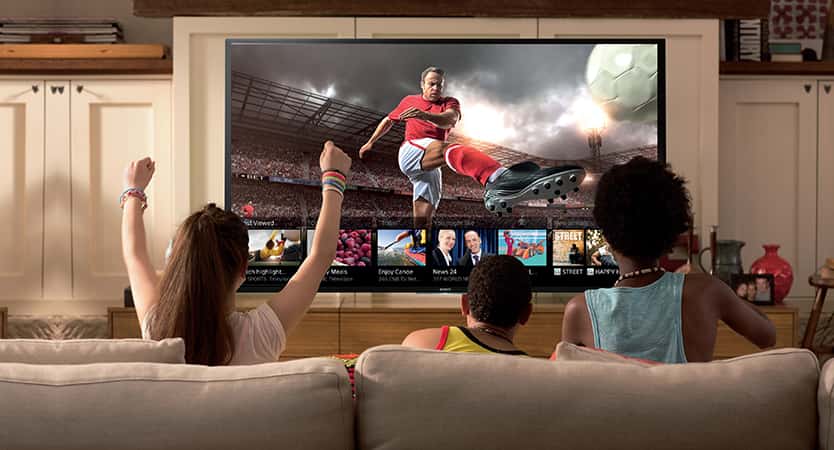
The production of televisions has become so widespread that models with names that do not mean anything to customers are increasingly appearing on the market. Of course, this does not mean at all that they are of poor quality. However, if you don't want to tempt fate, it is better to give preference to trusted brands:
- Lg Is a South Korean company that has been producing this type of equipment for many years. She was one of the first to introduce OLED technology and demonstrates quite good results in this matter. See rating of the best models from LG.
- Samsung Is another company from South Korea. This manufacturer sells the largest number of TVs with QLED technology, which we discussed above. See rating of the best models from Samsung.
- Philips - the models of the Chinese company TP Vision demonstrate one of the best combinations of quality and value of goods. Previously, the trademark belonged to a Dutch company, but was subsequently sold. See rating of the best Philips TVs.
- Toshiba Is one of the few brands that independently manufactures liquid crystal matrices for their displays.
- Sony - a fairly expensive Japanese technique, which, meanwhile, looks very attractive. See rating of the best Sony TVs 2025 of the year.
- Panasonic Is another popular Japanese brand. According to buyers' estimates, this technique is quite high quality. Some complaints are caused, perhaps, by the Smart TV technology.
![]() See also - Which brand is the best TV
See also - Which brand is the best TV
Quite good models are also produced by Sharp, VVK, AKAI, DEXP and Supra. The half-forgotten brands HORIZONT, Thomson, Hitachi and JVC are slightly lower in quality, but also quite popular. Before giving preference to this or that model, do not be lazy to collect the maximum amount of information about it. "Go through" the forums, study the real reviews of those who already have such a technique. So, you will learn first-hand about the advantages and disadvantages of a particular model.
Let's sum up
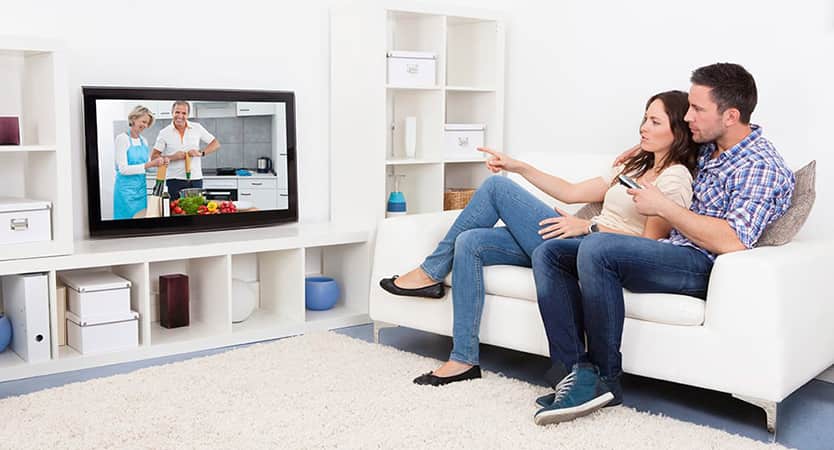
When you know how to choose a TV for your home, office or summer cottage, you can safely go shopping. Now no consultant will be able to persuade you to buy something that you absolutely do not need. To choose a quality product, it is enough to study all the recommendations in advance, decide on the necessary parameters and figure out what exactly can be purchased for the available amount.
Pay attention to the formats supported by the device. The most popular are MPEG-4, MKV and XVid. Right in the store, you can check the sound quality, study the viewing angle and evaluate the color content of the picture. Ask the seller for the remote control and flip through the menu. Listen to your feelings - the control system should be intuitive and uncomplicated. And, of course, you should like the TV visually. After all, it will become the main decoration of the living room or bedroom for several years.
To choose the best TV, put together a little cheat sheet for yourself. Check all the most important qualities and compare with the amount available. Using our tips, you will surely find exactly what you need very quickly.
See also:


Flour of choice) DEXP U65D9000K or SAMSUNG UE55MU6100
It is not possible to compare in the store "live" (it is not possible to go far) and these two copies are not always available.
What to choose from these two in order to go and pick up for sure?
The eye wants a 65 ”screen) and the brain says take Samsung)
The brain will not advise bad. You will be satisfied with Samsung.
Take it from Philips, I personally have 65PUS6412 at home, a very cool model